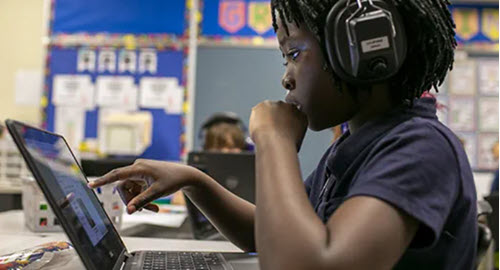NORTH BILLERICA, Mass., January 10, 2022— Curriculum Associates recently named 35 teachers to the 2022 class of Extraordinary Educators, an annual program that celebrates and connects exemplar teachers from around the country. Chosen from hundreds of nominations and representing 19 states, this year’s class of Grades K–8 educators exhibit best-in-class use of i-Ready, i-Ready Classroom Mathematics, and/or Ready, illustrate growth and achievement via formal assessments, demonstrate innovation and engagement practices for students, are evangelists for high standards and student achievement, and have been teaching for at least two years.
“With almost 500 years of teaching experience combined, this year’s Extraordinary Educators are all innovative and dedicated classroom leaders whose impact does not go unnoticed,” said Rob Waldron, CEO of Curriculum Associates. “We commend these educators for their best practices in the classroom day-in and day-out and look forward to supporting them with unique professional learning opportunities to help further support the amazing work they do.”
This year’s class of Extraordinary Educators—composed of seasoned educators and rising stars, including a districtwide Teacher of the Year—will have access to a network of peers from around the country to collaborate, connect, and learn from throughout the year, as well as access to professional development opportunities from Curriculum Associates. They will also be invited to participate and present at the Extraordinary Educators Leadership Summit as well as other professional learning events.
This is the third year of the Extraordinary Educators program. This year’s class joins 75 additional educators from across the country in receiving this recognition.
To learn about the 2022 Extraordinary Educators, visit CurriculumAssociates.com/Extraordinary-Educators/Classes.
About Curriculum Associates
Founded in 1969, Curriculum Associates, LLC designs research-based print and online instructional materials, screens and assessments, and data management tools. The company’s products and outstanding customer service provide teachers and administrators with the resources necessary for teaching diverse student populations and fostering learning for all students.
- SchoolStatus Launches SchoolStatus Boost, an Innovative Educator Development Solution for Enhanced Teacher Growth and Development - April 22, 2024
- Frontline Education Releases Inaugural K-12 Lens Survey Report To Guide K-12 Decision-Making - April 20, 2024
- Arizona’s Apache Junction Unified School District Supports Innovative Teaching and Learning with New EdTech Resources - April 19, 2024


